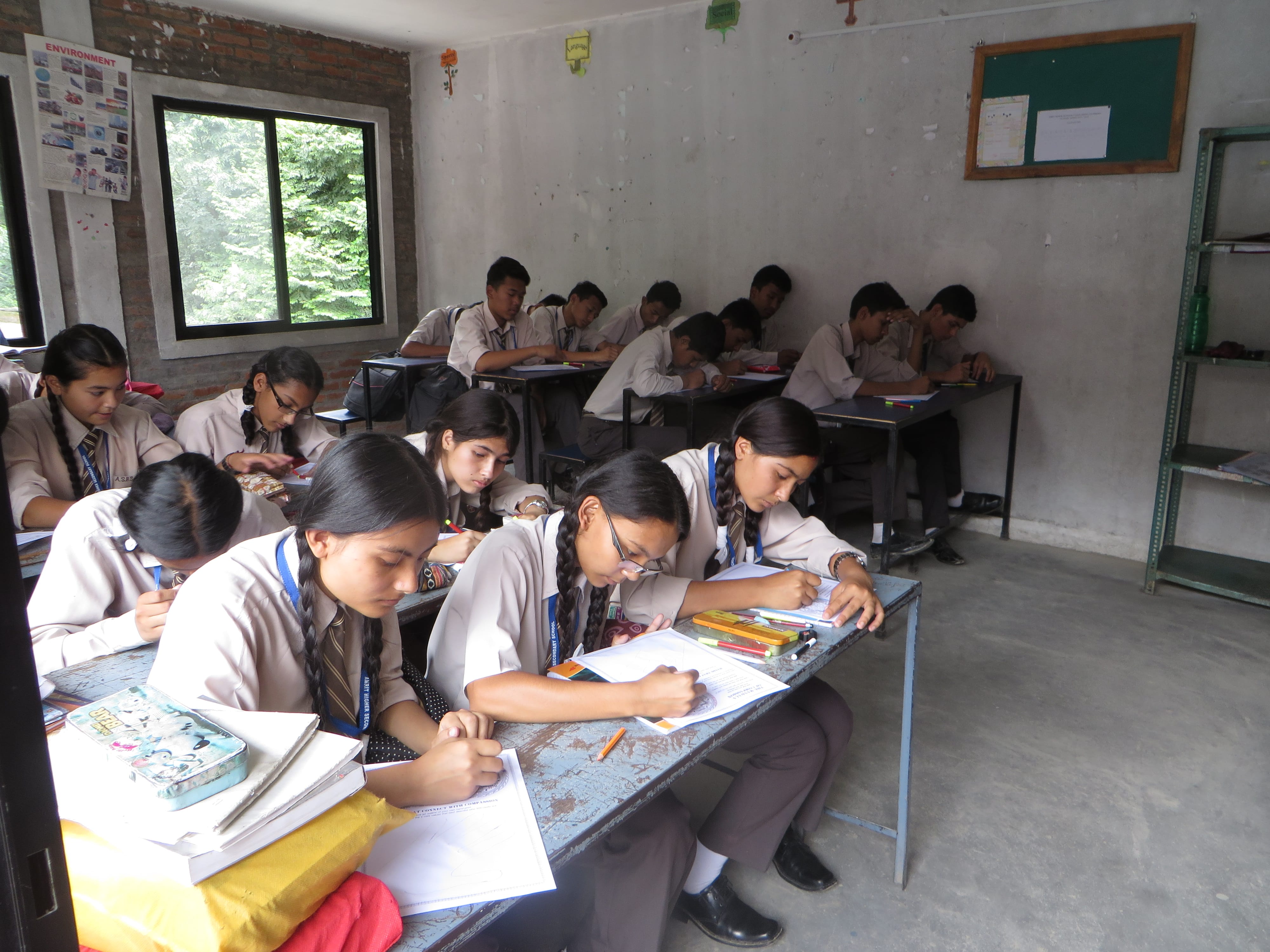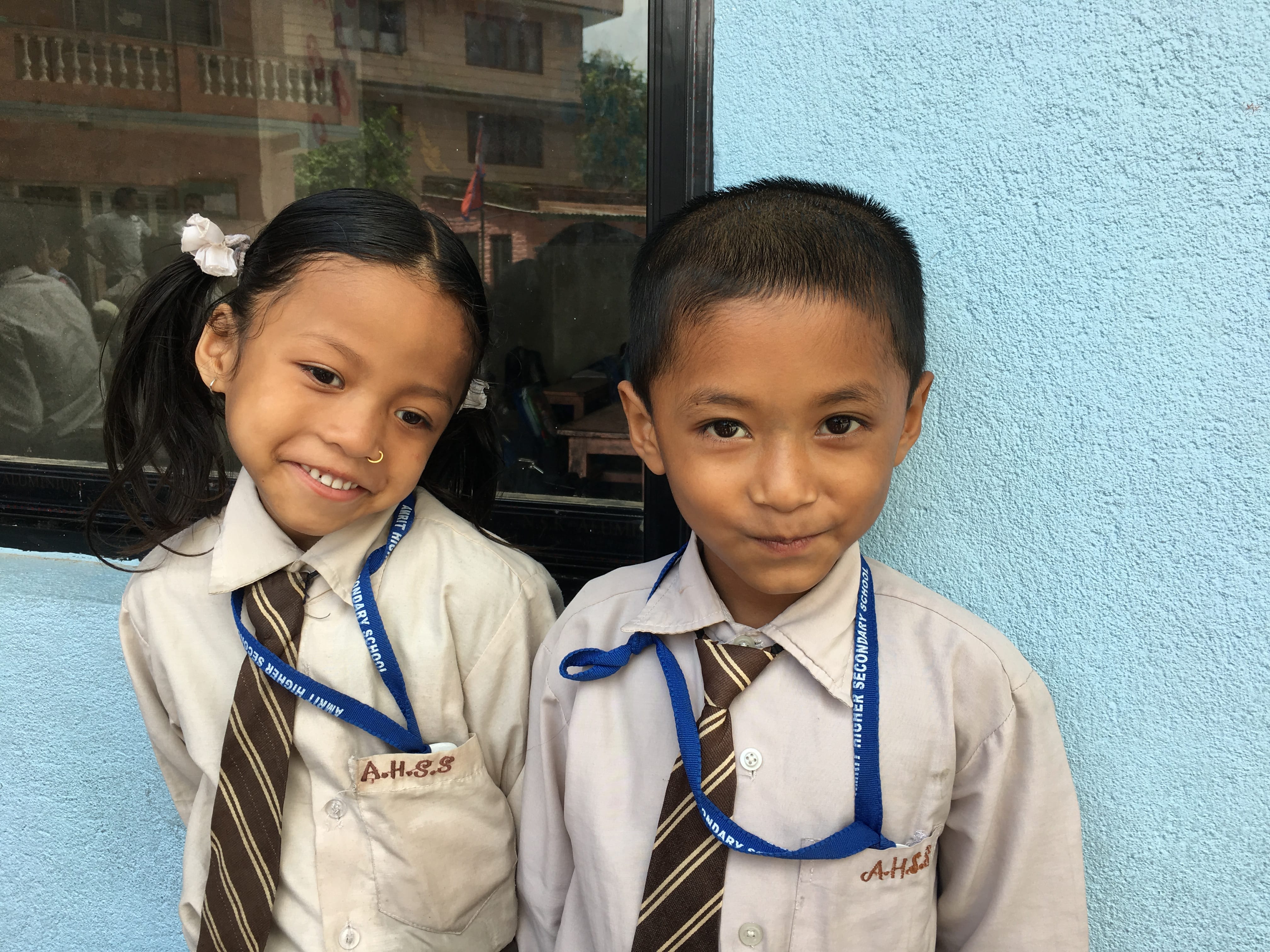
Day 7 - Children Just Like Me
Children in mind, children in kind. Without education, life is dark. We need education to lead a successful life. $5 can buy us a coffee or it can help a girl in Nepal attend school for one month. This means that she is reading, writing, learning with her friends and stretching her imagination for all those days spent in a classroom. When 10% more girls go to school, a country’s GDP increases an average of 3%. If a Nepali girl is not in school, she is three times more likely to be married under the age of 18, and she is twice as likely to die in childbirth than, if she completed primary school.
We had an opportunity to immerse ourselves for a couple of hours in the classrooms of up to 300 Nepali school students today. They were 4-17 year olds ready and waiting for us, starting the day with hopes of learning. Assembly was starting and was delivered only in English. They all stood in orderly rows and performed a set routine of calisthenics style exercises, led by a senior student on the microphone. This was followed by a prayer and the National anthem. They even marched off to the beating of the drum!
We were asked to introduce ourselves in assembly and give our words of wisdom to the children.

Liz spoke to them about how important it is to try your best and have fun but to listen to their parents, family members and teacher in order to learn, so they can becomes the best person they can be. She advised them to eat the fruits and vegetables provided to get all the goodness from food they need for energy to grow up big and strong. She encouraged them to try new things and learn different skills whenever they get the opportunity. She was passionate in telling them they should do activities that interest them and follow their dreams. “Dream of big things and work hard towards that, even from a young age”. The essence of her message was for each child to know they are special and unique. This was to be the theme for the activities she had planned for our classroom sessions. She had children drawing and colouring the outline of their hand on calico bunting that was to be hung in their classroom to ensure every child had a sense of belonging, in their learning space. They were asked to draw or write why they were special and what values are important to them. The teaching rationale was about having a sense of identity, a sense of wellbeing, and to contribute to the world.
So, when it was my turn to address the assembly, I took on the aspects of wellbeing and the contribution to peace in the world. I used the example that we know exercise is important for a fit, active and healthy body. But I added the element of wishing the best for others and for our self to keep a calm and peaceful mind. I talked about finding love in the heart for the special unique person they are, and then expanded into the concept of sharing compassion. I asked them to wish for others to be safe and protected, to wish for others to be happy and healthy, to wish for others to live with peace of mind. And to then wish this for themselves. My classroom activity was a replica of the one I did with 130 Wangaratta primary school children prior to my departure. It involved a short meditation session to calm the mind, then some mindful colouring of the mandala of compassion, followed by drawing the handprint and core values. I brought books of these colourings from Australia to give to the Nepali classrooms and will take theirs back home to share with other students. I was with the older students and they nodded with enthusiasm as I spoke. They sat so peacefully in the meditation, and got themselves very involved in the colouring activity. It was comforting that the girls were in equal numbers in the classroom and were not displaying reticence or shyness with learning. Let us hope this good education for these girls allows them to grow wings and fly with independence in their adult lives.

Looking down at these children we reflected on the similarities to our children back home in the western world: uniforms, pigtail, study subjects, respect for their teachers. The differences to our children back home was the amenities and resources available to the Nepali students. They did not have coloured pencils for the colouring activity. Whilst we had gone to the local little shop and bought out the last packets of crayons, pencils and textas to donate, we simply did not have enough to go round. There was only 2-3 pencils to share between 4-5 children. If only we’d had more! But the children never complained. They probably did not notice as ‘going without’ is what they are used to. Their classrooms were crowded and stuffy and very bare. The toilet block was smelly. They go to school 6 days a week here. The surrounds of the school was the local slum and massive rubbish dump in and along the river banks behind the school. This was filthy and very disgusting and thankfully not a sight we would see back home.
The final activity was recess in the playground with Liz and a 6-metre colourful parachute which over a hundred children held and jiggled and fluttered and ran in and out under. Liz threw a toy koala onto it and soon the children were squealing as the parachute was hurling the koala into the air bouncing all over the place (it should have been a kangaroo- a koala has never moved so much!) It was so much fun. We were exhilarated watching the joy, delight, happiness, and fun at being involved with these happy little (and big) students. Even the principal was running in and out gleefully under the parachute. The beautiful thing about learning is that no-one can take it away from you.


Mandy

